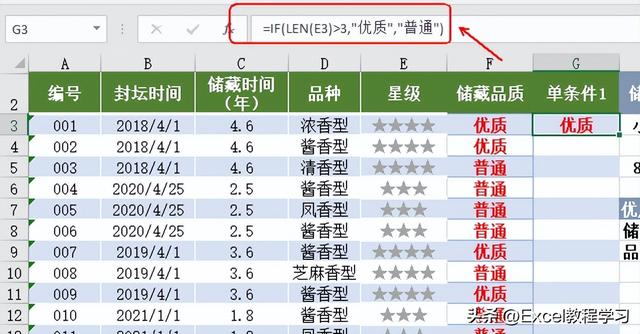4座惊艳世界的建筑(23万块砖让这座新建筑有了古老的灵魂)

伊朗Cheshm-o-Cheragh 商业场所Cheshm-o-Cheragh Bazaar / ABAR Office由专筑网小R,吴静雅编译介绍与问题。马什哈德是是伊朗第二大城市,也是世界上最大的宗教中心之一。但是这里有着许多社会问题,例如,许多人都更加看重自己的个人利益,同时不接受文化的多样性,从而导致一些社会学家们认为马什哈德是一座“反对交流的城市”,这里有着最高的离婚率、社会冲突、贫民窟。然而,“反对交流”这一特质在城市的实际发展中通过许多实例表现得很明显。历史街区的大规模拆迁、城市肌理与高层建筑的不均衡发展等问题也逐步出现。Introduction and Problem. Being Iran's second sprawling city, Mashhad is also one of the largest religious capitals in the world. However, it has been struggling with numerous social problems. Prioritizing individual interests over the public and not embracing the existing cultural diversity has led some sociologists to call Mashhad "the anti-dialogue city"; having the highest rates in divorce, conflicts and slum dwellers in Iran were among the significant reasons for this given name. Being anti-dialogue, however, has made itself obvious within the urban physical developments through its many instances. The extensive demolition of the historic district and an ill-proportioned city texture and high-rise constructions, to name but a few, are the prominent evidence.

该项目位于历史街区之中,占地571平方米,毗邻有着400年历史的杰出建筑遗产“Gonbad-e-Sabz”,“Gonbad-e-Sabz”备受人们的尊敬,因为这是Safavid神秘主义者Sheikh Mohammad Momen的坟墓,同时也是人们的社交聚会的场所。当前而言,这座坟墓周边发展了许多高层建筑,这些开发项目并没有尊重公众的利益,使得场所的圣洁性得到质疑。The site of the project is an area of 571 square meters amid the historical district, and adjacent to “Gonbad-e-Sabz”, an outstanding architectural heritage with a 400-year-old history. Gonbad-e-Sabz is highly respected among the people since it is the tomb of a well-known Safavid mystic -Sheikh Mohammad Momen- and a social gathering place. New developments of tall buildings in the proximity of this tomb, with no regard for public interests, have brought discredit to its vicinal and heartfelt sanctity.



另一方面,该项目的客户希望通过商业场所而最大程度得获取利益,因此,客户对于项目的预期特征和建筑真实的场地状况之间存在有一定的距离与问题,如果不加以联系,那么这些问题就会给社会的经济造成影响。因此,建筑设计的主要问题便是如何使得场所环境和背景之间构建起和谐的联系与对话,让商业功能能够融入到文化精神之中。On the other hand, owing to the client’s commercial aim for the land, and undoubtedly, their anticipated maximum benefit, a serious difference of opinion between the client's expectation of the building's character and its surrounding, especially Gonbad-e-Sabz, was creeping in. Without creating a dialogue, these differences would have been nothing but adverse financial impacts. Therefore, one main problem in designing the building was how to make possible the dialogue between the place and the growing concerns of its environment and context. So that it could fit in the cultural spirit alongside its commercial functions.

策略。当地法规要求该地块的建筑只能为3层,但是建筑师可以按照规定多购买两层楼的许可证。但是在这样的一个环境之中,如果设计的是3层的商业空间,那么这座建筑就会比旁边的保护建筑Gonbad-e-Sabz更高一些,因此建筑师也并没有申请更多楼层的建造,甚至让建筑低于限制高度。为了满足客户的需求,结合思考形态与场地的关系,这座建筑有部分位于地下。Strategies. Seeing that the municipality only authorizes a three-story building, we could even purchase the license for two more floors, according to the rules and regulations. In a sensitive place where erecting a building with three commercial floors would become taller than Gonbad-e-Sabz, not only did we refuse to get the extra two floors, we also cut the Gordian knot by changing the attitude towards official licenses, and went one floor lower than the height limit as a result. To actualize the client’s demand and scale control, considering the figure and ground relationship, the building was further embedded in the ground.

在面向遗产建筑的一侧,新建筑保留了一定的退距,控制了边缘形态,建筑的内部仍然保持完整与通透,建筑的外部则较为封闭,立面上的开口也较小。建筑师通过一些空腔来保持建筑体量由上至下的连贯性,使得在整个内部构成了透明的流动形式。这种做法并不常见,这是针对当地的现代商业场所而构思的全新尝试,目的是保持空间和视线的通透性和完整性,以及光线的充足性。设计方案构成了建筑与场地之间的交流与沟通,建筑师也通过此方案来表达了对于一些开发项目破坏历史地块的批判,因为这些现有的开发会对城市的发展带来毁灭性的影响。What’s more, it was given a setback from the square that heritage building was in. Furthermore, by controlling the edge, inside the building is completely transparent and integral while the outside is solidly built with a minimum opening. Later on, by employing several voids to keep the volume penetrable from top to bottom, a transparent and fluid form was achieved inside. This went against the common typology of passage and was an attempt to create a new type of Contemporary Bazaar; in the end, spatial integrity, visual and circulation continuity, and light transmission were the achievements of this strategy. The endeavor to ignite a dialogue between the building and the ground, causes the Cheshm-o-Cheragh Bazaar to be critical of the extended demolitions in the historical district and its valuable architectural heritage. These existing urban developments of Mashhad have brought devastating outcomes.




一方面,由于城市的重新规划,砖石成为了经济而常见的材料,另一方面,历史地块内的许多遗产建筑都被拆除,遗留下了许多废弃的砖石材料,因此,建筑师决定将这些材料进行重新利用,尤其针对建筑的内外空间,构建整个商业场所。建筑师在历史街区中收集了大约23万块古老的砖石,它们的年限从60年至300年不等,如果没有当地合作伙伴的协作,这项任务几乎不可能完成。这些砖石的尺寸、色彩、肌理都各不相同,整个项目就如同是一位“历史的保护者”,建筑师在保留现代特征与背景的同时,将砖石和金属、玻璃等现代化材料共同应用于室内空间。Brick, on the one hand, was considered a cheap material because of the recent urban regeneration in Mashhad. On the other hand, as a result of the extensive demolition of the architectural heritage within the historical district, brick is being thrown away like garbage. Consequently, to clearly represent the act of criticism, we arrived at the final decision of constructing the entire form of the Bazaar (especially at the edge of the inside and the outside) by implementing the disposed of historical bricks. 230000 number of bricks - 60-300 years old - were gleaned from the historical district, an area of 1000 acres. This could not be achieved, were it not for people's help. Due to the technical challenges, the clear differences between the bricks in size, color, and texture; the project was carried out by "conservators". Eventually, in the dialogue between context and era, new materials like metal and glass were used inside alongside bricks.

























建筑设计:ABAR Office 地点:伊朗类别:商业建筑 主创建筑师:Javad Khodaee 面积:2654.0 ㎡ 项目时间:2018年 摄影:Mostafa Delbarian, Ali Hosseinian, Deed Studio 制造商:Loading... 设计团队:Javad Khodaee, Abbas Fadaee 客户:Sanat Beton Shargh Company 施工方:Seyyed Mahdi Mahdizadeh, Mostafa Elahi 监督与管理:Javad Khodaee, Farajollah Sadeghi 砖石采购小组负责人:Seyyed Ruhollah Mahdizadeh 砖石团队负责人:Hossein Farouji 玻璃天花板的设计研究:Naghshe-Puya company, Mahdi Abbaspour 设计研究工作室:Reza Ashraf Yazdi 媒体图像工作室:Mostafa Delbarian, Navid Maani Ghafouri 视觉特性:Chapchin Studio 模型 & 3D:Azam Soleimani 展示助理:Ahmad Farahi, Masoud Erfanian, Mona Rashidi 结构:Javad Sirjani 电力工程:Naser Gharavi 机械工程:Mohammad Gheitaghi Architects: ABAR Office Location: Mashhad, Khorasan-e Razavi Province, Iran Category: Commercial Architecture Lead Architect: Javad Khodaee Area: 2654.0 ㎡ Project Year: 2018 Photographs: Mostafa Delbarian, Ali Hosseinian, Deed Studio Manufacturers: Loading... Design Team: Javad Khodaee, Abbas Fadaee Client: Sanat Beton Shargh Company Construction: Seyyed Mahdi Mahdizadeh, Mostafa Elahi Supervision: Javad Khodaee, Farajollah Sadeghi Head of Brick Collection Group: Seyyed Ruhollah Mahdizadeh Head of the Brick Implementation Group (Conservators): Hossein Farouji Design and Implementation of Glass Ceilings: Naghshe-Puya company, Mahdi Abbaspour Design-Research LAB: Reza Ashraf Yazdi Media-Graphic LAB: Mostafa Delbarian, Navid Maani Ghafouri Visual Identity: Chapchin Studio Modeling & 3D: Azam Soleimani Presentation Assistants: Ahmad Farahi, Masoud Erfanian, Mona Rashidi Structure: Javad Sirjani Electrical: Naser Gharavi Mechanical: Mohammad Gheitaghi
【专筑网版权与免责声明】:本网站注明“来源:专筑网”的所有内容版权属专筑网所有,如需转载,请注明出处
,免责声明:本文仅代表文章作者的个人观点,与本站无关。其原创性、真实性以及文中陈述文字和内容未经本站证实,对本文以及其中全部或者部分内容文字的真实性、完整性和原创性本站不作任何保证或承诺,请读者仅作参考,并自行核实相关内容。文章投诉邮箱:anhduc.ph@yahoo.com






